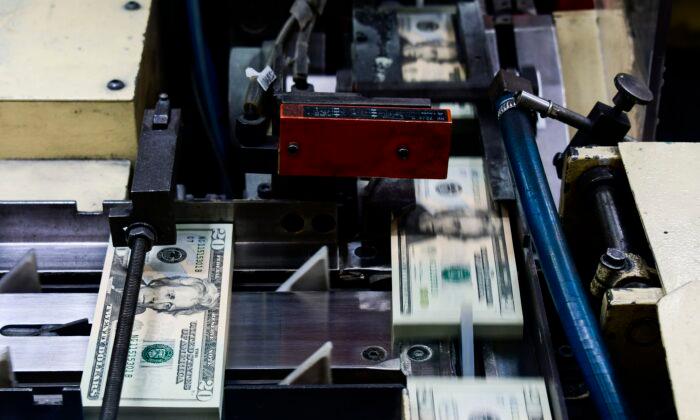The regime in Beijing, which has experienced limited success in its quest to overtake the U.S. dollar as the global trade currency, might have an easier time persuading the world to accept its government bonds as an investment alternative to U.S. Treasurys.
So far this year, Chinese government bonds have far exceeded the performance of their U.S. counterparts. While Chinese government bonds were relatively flat in terms of returns from Jan. 1 through the end of March, the Bloomberg Barclays U.S. Treasury Total Return Index fell 4.2 percent during the same period.
Some investment experts think Chinese government bonds could overtake U.S. Treasurys as the de facto “safe haven” asset.
“China’s emergence as a new and credible safe haven destination for bondholders should gradually chip away at the status of the dollar and U.S. Treasurys as the only safe place to hide,” Gustavo Medeiros, deputy head of research at Ashmore Group, recently told Bloomberg. Ashmore is an emerging market investment firm, with almost $100 billion in assets under management as of Dec. 31, 2020.
Morgan Stanley also expects foreign investors to continue pouring into China’s government bonds, as “valuations remain attractive vs. other (developed markets) bonds and provide huge diversification benefits for global fixed income portfolios,” Asia Chief Economist Robin Xing wrote in a March 5 note to clients.
The ongoing push from banks and brokers can’t be overlooked.
In February 2020, J.P. Morgan Chase added Chinese local government bonds into its JPMorgan Government Bond Index—Emerging Markets. In September 2020, FTSE Russell announced it would add Chinese government bonds to its World Government Bond Index. Combined, these two index additions could drive more than $100 billion of inflows from foreign insurers, asset managers, and pension funds into Chinese government bonds.
While arguments for diversification aren’t new, investors have been buying into this view more recently because of the rout in U.S. Treasurys so far this year. Treasurys fell their most in more than a decade, steepening the yield curve on specters of higher inflation and the Federal Reserve’s continued dovishness.
Despite the recent price declines, there is still a significant yield gap between Chinese government bonds and Treasurys. The Federal Reserve has signaled that rates will stay near zero until 2023, which creates a challenging environment for U.S. bond investors.
As of April 9, 10-year Treasurys are yielding 1.66 percent. By comparison, the 10-year China government bond is yielding almost twice that amount at 3.23 percent. Of course, China’s government creditworthiness is less stellar—it’s rated A-plus by S&P and Fitch, while the United States is rated higher at AA-plus and AAA, respectively.
Government bonds in the United States and Europe pay such little interest that many investors are forced to go elsewhere to obtain sufficient returns. That’s especially true for pension funds and insurance companies that must meet certain returns in order to generate sufficient cash to pay liabilities.
While Chinese corporate bonds have garnered recent headlines around increased default rates and less presumed support by the Beijing regime, Chinese government bonds are believed to be far safer. The Chinese Communist Party (CCP) will likely let far more private corporate bonds default before its central government bonds are allowed to default.
But the investment thesis in Chinese government bonds isn’t as clear cut as the economics would suggest.
The Chinese debt market is far smaller—and less liquid—than the $21 trillion U.S. Treasurys market. Unlike the massive U.S. Treasurys outstanding, Chinese government bond issuances are less than 20 percent of China’s GDP, according to JPMorgan estimates. The lower liquidity means the bid-ask spread on Chinese bonds is far greater than government bonds issued by the United States, Germany, Japan, or the UK.
Market access remains a big obstacle. While China has loosened restrictions on who can purchase its bonds, foreign investors are still limited to access through Hong Kong (Bond Connect) and applying for the Qualified Foreign Institutional Investor (QFII) program.
FTSE Russell, which initially said the inclusion of Chinese bonds would take less than 12 months, announced in March that the phase-in period could take up to 36 months after some client feedback regarding liquidity and market access.





